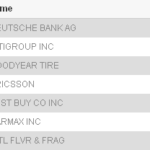Wednesday, the National Stock Exchange (NSX) announced that commodity ETF inflows totaled $30.1 billion in 2009, up from $13.4 billion in 2008. This portends a trend of retail investors plowing money into commodities via ETFs given wider availability and constant bombardment from the media on the ever weakening US dollar and its impact on commodity prices given their denomination in the USD. The majority of the increase was in long-only ETFs but last year saw the launch of several leveraged ETFs which allow for 2X and 3X return (daily rebalancing) of gold, silver and other commodities (full Leveraged ETF List).
Winners and Losers:
The gold ETF GLD rose 24% on the year while UNG (natural gas) declined 56%. Investors should be mindful of whether their ETFs own the underlying commodity (like GLD) or rely on forward contracts (like UNG) which can affect returns and result in perceived tracking error. Also noted was the United States Oil Fund (USO) which net inflows decline to $52 million in 2009, from $3.4 billion the year before, as the fund gained only 19% in a year when oil prices nearly doubled (traders caught on). Additionally, leveraged ETF risk must be considered and these should primarily be avoided as “investments” but rather treated as trades given the decay in value that occurs over time no matter what happens to the underlying index as shown here. Of the several ETFs that were up over 100% for the year, a few were leveraged commodity ETFs defying the decay cited previously because the trend was pronounced and lengthy. That type of steady upward rise is unlikely to repeat itself annually.
Source: Fox Business News










{ 0 comments… add one now }